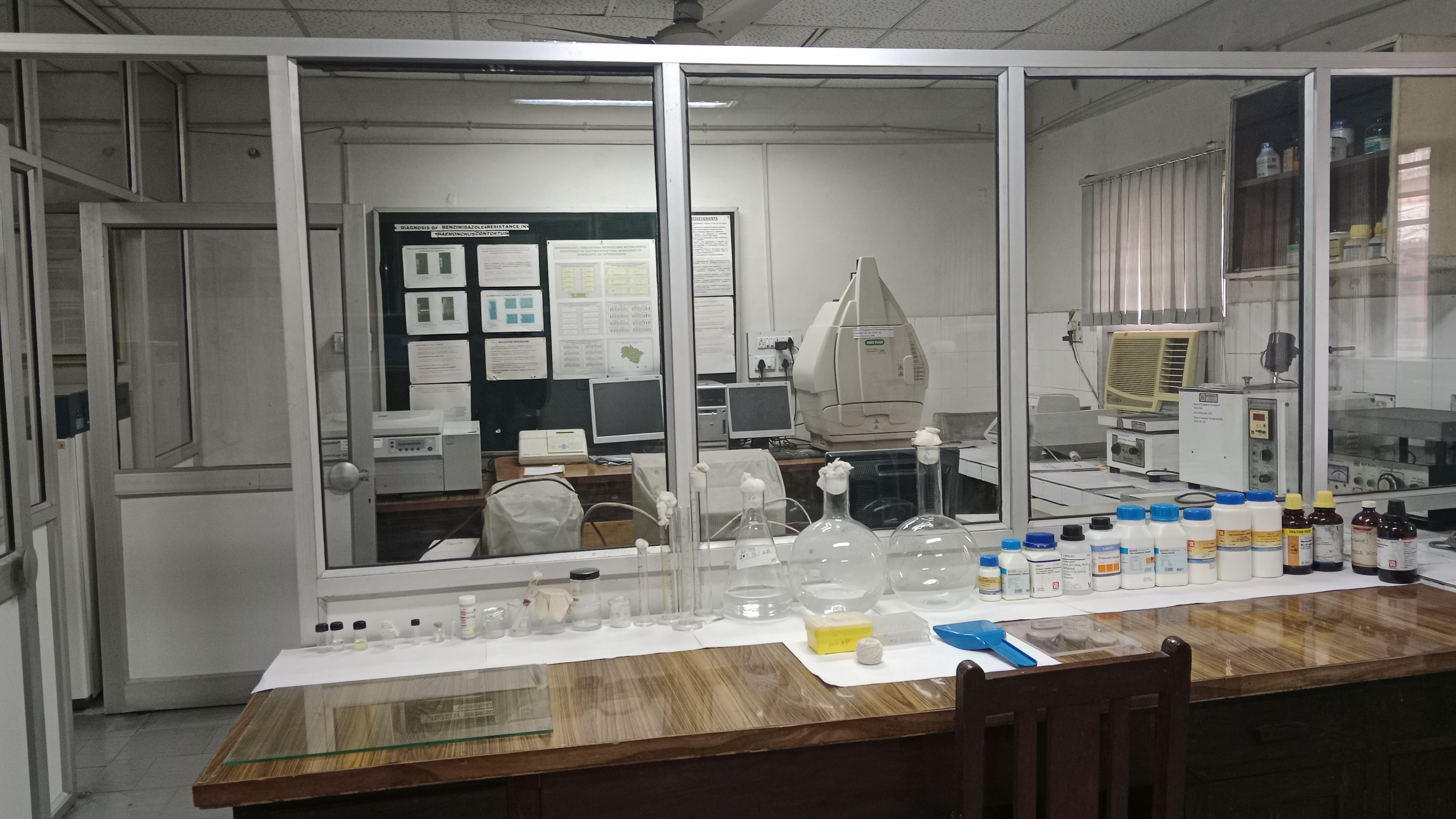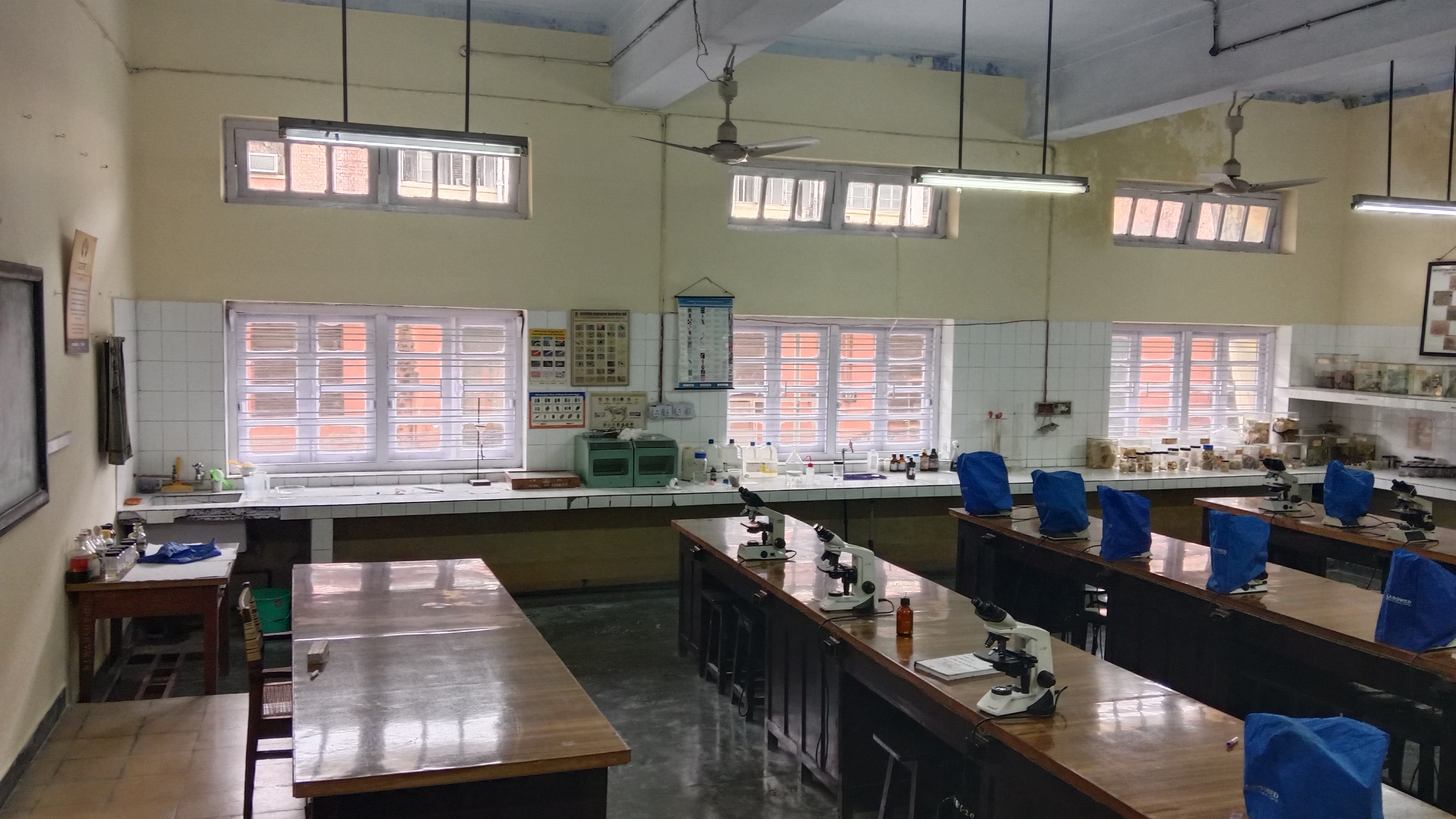
-
Dr. Stuti Vatsya Head, Department of Veterinary Parasitology, College of Veterinary and Animal Sciences Contacts +91-5944-233051(O), +91-9412969022 (M) stutivatsya[at]gmail[dot]com
About Us
The department of Parasitology was a constituent of the erstwhile Department of Veterinary Pathology and Hygiene within the College of Veterinary Sciences, since inception. It was in 1976 that the Department of Parasitology came into independent existence. Since then, the department engaged in teaching, research and extension activities. These departmental activities are supported by professionally competent academic staff comprising of 1 Professor and 2 Assistant Professors.
The department is actively engaged in imparting knowledge about various parasitic diseases of domestic animals including their diagnosis, treatment and control. The faculty of the department has published 4 books, 3 manuals, in addition to more than 250 research articles. The faculty participates and presents research papers in conferences, seminars and symposia at both national and international levels. The department maintains constant linkages with different departments of the university as well as with state veterinary hospitals, leading research institutes and other veterinary colleges of India.
Infrastructure- Available Office/Laboratories/Clinical Complex/Outpatient Department:

Dr. Stuti Vatsya
Professor & Head
+91-5944-233051(O), +91-9412969022 (M)
stutivatsya[at]gmail[dot]com

Dr. Rajeev Ranjan Kumar
Associate Professor
+91-9457166680
rajeevpara[at]gmail[dot]com

Dr. V.S. Singh
Assistant Professor
+91-9410168987
singhvs65[at]gmail[dot]com
| S.No. | Student Name | ID. No. | Year of admission | PG/Ph.D. | Advisor Name | Thesis Title (Tentative) |
|---|---|---|---|---|---|---|
| Dr. Ankit Nagar | 41691 | 2021 | Ph.D. | Dr. Rajeev Ranjan Kumar | Molecular epidemiology of Babesia Sp. affecting dogs |
Research Highlights/Achievements:
- Prevalence of fasciolosis and amphistomosis was highest in tarai region followed by hills and plains, respectively. Buffaloes were the most susceptible hosts followed by cattle, sheep and goats. The incidence of F. gigantica infection was high in post-monsoon season (September- January), with peak in January in the tarai.
- Highest incidence of G.I. nematodosis was in goats followed by sheep, cattle and buffaloes. Haemonchus, Trichostrongylus, Bunostomum, Oesophagostomum and Strongyloides sp. were the main parasites recovered from intestines of sheep and goats. Incidence of strongylosis in equines was 78.95% with maximum prevalence in tarai region of Uttaranchal.
- Prevalence of Cysticercus tenuicollis was recorded in 34.94% and 24.19% sheep and goats of tarai region, respectively.
- Various species of Sarcocystis viz. S. fusiformis and S. levinei in buffaloes, S. miescheriana and S. suihominis in pigs, S. cruzi, S. hirsuta and S. hominis in cattle, S. capracanis and S. hircicanis in goats have been recorded. The overall prevalence was 73.72%, 67.98%, 87.03% and 73.33% in buffaloes, pigs, cattle and goats, respectively.
- Incidence of Theileria annulata in cattle and buffalo was 4.51% in Tarai of Kumaon hills. Parasite was more common in cattle than buffaloes and adult of both are more susceptible.
- The overall prevalence of common tick Boophilus microplus in cattle and buffaloes was 41.24 percent in Tarai region. Young animals and crossbred cattle were more susceptible to tick infestation as compared to adult and zebu cattle.
- Fasciolosis: Two major fractions of proteins, one comprising of low molecular weight proteins (10.0, 14.0, 19.0 kDa ) and the other containing medium molecular weight proteins (28.0, 35.0 kDa) Have been used for standardization of Dot-ELISA immunodiagnosis of fasciolosis in ruminants. Cross-reactivity between Fasciola gigantica and Paramphistomum epiclitum has also been established.
- Toxocarosis: Immunoreactive fractions of embryonated egg antigen of T. vitulorum were identified by SDS-PAGE and western blotting. The antigen was further used for standardization of IHA, CIEP and Dot-ELISA to detect dormant larvae in pregnant cows and buffaloes.
- Visceral larva migrans: Diagnosis of visceral larva migrans in monkeys caused by T. vitulorum larvae was accomplished by detecting antibodies in sera of experimentally infected monkey by DID and CIEP.
- Metacestode infections: Different immunodiagnostic tests viz. Oucterlony bidimensional immunodiffusion test, CIEP, IHA, Bentonite flocculation test, Fluorescent antibody test (FAT) and ELISA have been standardized using whole cyst, cyst fluid and scolex antigens of Cysticercus cellulose. FAT using whole cyst and cyst fluid antigens gave excellent results.
- Trypanosomosis:Passive haemagglutination test was standardized and found to be specific for trypanosomosis in buffaloes.
- Sarcocystosis: CIEP was found to be more sensitive than DID and IEP for diagnosis of S. capracanis when soluble antigen prepared from mature micro-sarcocysts was used. Similarly, CIEP was found most satisfactory for the purpose of diagnosis of S. cruzi and S. hirsuta than SRID, DID, IEP, RIEP and precipitin tests. However, ELISA using partially purified sarcocyst antigen was found to be the most sensitive and specific test for immunodiagnosis of infection in animals.
- Trematode infections: Oxyclozanide (@10mg/kg) were highly effective for treatment of fasciolosis and amphistomosis in cattle. However, Triclabendazole (@25mg/kg) was highly effective for treating fasciolosis in buffaloes.
- Nematode infections: In equine strongylosis, Doramectin (@0.2 mg/kg) was the most effective drug. Ivermectin and Pyrental pamoate were also highly effective. The horses of six out of eight organized farm surveyed for benzimidazole resistance were found to harbour moderately to severly resistant strongyle population.
- Tick infestation: The in vivo trials with Dimecron, Malathion and Sevin in 1.0, 0.75 and 0.5 percent concentration was 100 percent effective against Boophilus tick. The efficacy of hydrodistilled extracts of Artemisia annua, A. vulgaris, Ocimum basilicum and Tagetes minuta was screened against B. microplus ticks and compared with some ready to use herbal preparations (Pestoban, Pestoonar and AV/EPP/14) and chemical acaricides (deltamethrin, fenvalerate).

